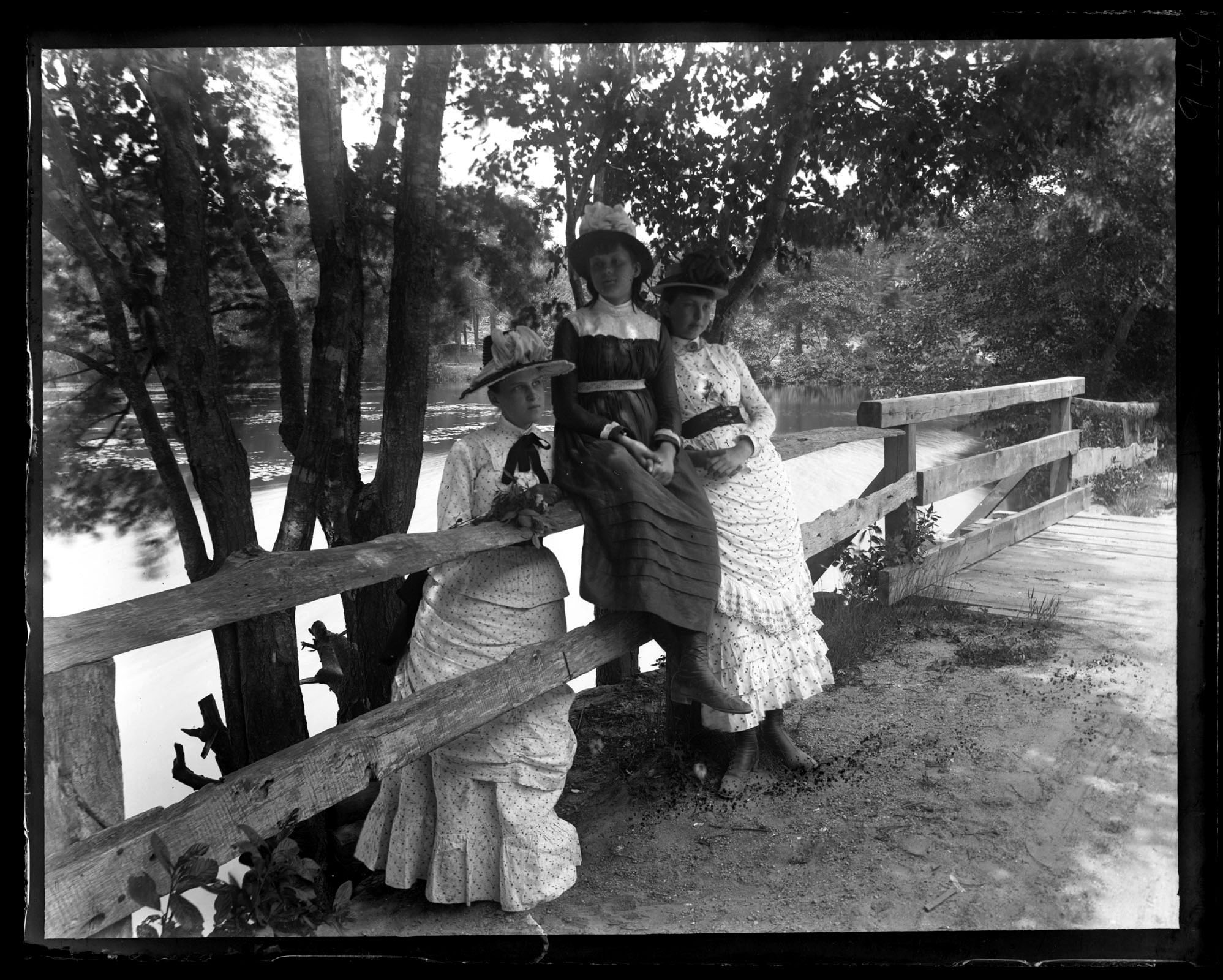White Clothing and Victorian Laundry
Something that surprised me while looking through the Marriott C. Morris Collection was the prevalence of white dresses in outdoor settings. As a perpetual food dropper and clothing stainer, I cannot imagine wearing white as my everyday clothing. While there were plenty of images of women in darker and black outfits, I could not get over the many images of women in such light colored dresses doing what I would consider particularly dirty activities: for example, this image of a tennis party, where Elizabeth Canby Morris sits in the grass in her all-white outfit. While tennis whites are traditional, I am still cringing at the thought of all those grass stains!
Even more baffling to me are the negatives showing Elizabeth Morris and other women on walking trips through fields and dirt roads in white dresses. Presumably the Philadelphian upper-class families had good laundry services to keep their dresses so bright. Out of my great curiosity, I decided to look into laundry practices at the time to see how much effort went into keeping these outfits clean and pristine.
Washing clothes in the late 1800s was a laborious process. Most household manuals recommended soaking the clothes overnight first. The next day, clothes would be soaped, boiled or scalded, rinsed, wrung out, mangled, dried, starched, and ironed, often with steps repeating throughout. Some manuals recommended scalding and rinsing up to three times! In order to keep whites white, women of the time came up with a number of stain-removal solutions. For example, multiple manuals mentioned that sour milk can remove iron rust from white clothing. Fruit or wine stains can be treated with chloride of lime, sal ammonia, or spirits of wine. And ink can be removed with just a few drops of oxalic acid or salts of sorrel.
Every wash included a “bluing” stage, wherein the white clothing would be boiled or scalded with water tinged with blue dye. This was a technique used to make yellowing cloth appear whiter. It works because blue is a complementary color to yellow, thus allowing our eyes to see more white when a little blue is added. As bluing rinses out over time, 19th-century women had to blue their water for every wash to maintain their whites. Bluing products are still available for laundry today.
One household manual from 1887, The Hearthstone, or, Life at Home, contained instructions for bleaching clothing as well. Cotton could be bleached by soaking in buttermilk for a few days, or adding turpentine to the first washing stage. For muslin, solutions of sal-soda and chloride of lime were used after the first boil with soap, followed by hanging the clothing to dry in the sun. Finally, flannels could be bleached with ammonia in the water.
Victorian household manuals also covered how to keep mourning blacks and colored clothing dark and prevent bleeding of colors, with similar chemical ingredients and long stages of boiling, rinsing, and washing again. If every type of clothing required such extensive laundry rituals, I suppose I can better understand the impulse to hike about in white dresses. After all, The Housewife’s Library says that the object of dressing is “To secure personal comfort and health, to preserve modesty, and to please the taste,” and that those of “fair complexions require delicate tints” (George A. Peltz, The Housewife’s Library. Philadelphia : A.L. Bancroft & Co., [1883]). By this mandate, Elizabeth Morris and her friends were simply following the style of the time. I can hardly blame them for wanting to look fabulous while adventuring outdoors.
Em Ricciardi
Curatorial and Reading Room Assistant





